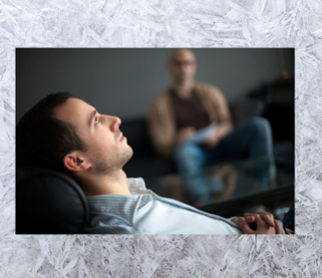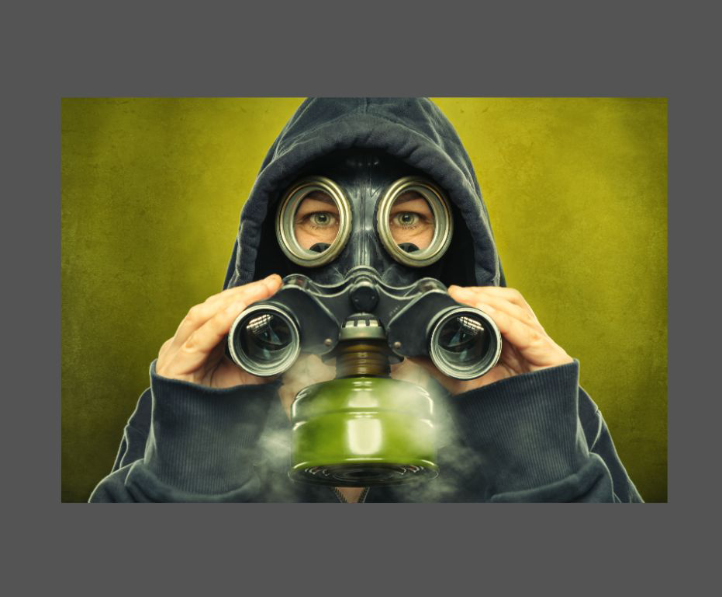The Locomotive and the Caboose -- Which Are You?
So I’m thinking about how easy it is sometimes for some of us to become myopic, to narrow the focus of awareness down to something that is attention grabbing and emotion inducing, probably either bright and shiny or a gruesomely fascinating wreck on the side of the road.
But it's only part of the big picture. And to get lost in detail is to miss the rest.
Something that has become useful to me as a reminder or a map of how to see a bigger picture is research that some folks at Harvard have been doing over the years. William Torbert and some others. And what their research is showing is that, in general, at any one point in time a person has approximately 50 percent of our energy, awareness, or mastery focused on our present condition. What we know, and who we know. And who we experience ourselves to be in this here now time in our life.
So if approximately 50 percent of me is here, where is the other half of my attention and energy?
What their research shows is that about 25 percent of us is trailing behind, dragging its feet. You know: “I don't want to.” “I can't.” “Never done it before.” “I tried it once and it didn't work.”
And 25 percent of us is out there ahead, kind of scouting, looking for any new opportunities.
So the way that I envision this is a train. And there's a very nice Pullman car and it's got a dining facility and a nice berth for sleeping. You can live comfortably in this car. And then there is a caboose on the train. It's kind of bringing up the rear.
And there's a locomotive in front that’s pulling you forward toward something. Drawing you toward what is not yet. And actually to me that's very hopeful that as much as 25 percent of me is engaged in that locomotive energy. That's a lot.
One locomotive can pull a lot, can pull a Pullman car and a caboose. Of course it depends on how powerful the locomotive is, how opulent the Pullman car is, and on how much drag the caboose is causing.
And as we do the repair work of the damage that's been done in our lives, over our history we're bringing that caboose forward in a way that is not weighing us down or holding us back like it maybe has at times.
And as we proceed into developing our capacity for embracing our full potential, accepting the possibility that we actually can do what we never thought we could do, we empower the locomotive pulling us forward.
That is the work we do as transformation agents, as transpersonal therapists: we help to repair damage and we help build capacity that moves us in the direction that we most want to be headed in. Expeditiously. We help those we work with to maintain focus on both the caboose and the locomotive all the time. Because if I can have the elevated view when I do something kind of stupid or make a mistake, or trust when I shouldn’t, I can say that the caboose is doing the best he can.
If my awareness and energy is always in the caboose, then making a mistake only reinforces keeping myself preoccupied in the caboose. But when I remember that there is also a Pullman car and there's also a locomotive on the train, I begin to get my orientation to where I want to intentionally place it.
And that becomes a model for other people as well. We know that the number one factor in our effectiveness for intervening in the lives of students or clients is who we are as a model. That's how people are going to change. Not by the techniques we employ. Not by my expectations. Certainly not by my judgments. The people that come to you, that are attracted to work with you, “do as you do, not as you say.”
So the more I can remember to identify myself as the engineer of my train, the less I beat myself up when I find myself in the caboose. And it’s important to remember that where this whole train is today is way down the track from where it was 20 years ago or 40 years ago.
We benefit from taking a little bit of an elevated viewpoint of ourselves and other people in our lives, and really of the whole world, instead of narrowing the focus down to what seems to be an insurmountable problem and not allowing it to become Dooms Day. Remember that there are a lot of locomotives in this world. In all of the people that are open minded, optimistic, and future oriented throughout the world.
And it's my belief that every human being has a locomotive too, no matter the judgments I might have or the behaviors that they exhibit. Let’s call it an internal conflict free zone, a part of their being that is pure and is available to them and to the world. And if we can find ways to access that part of ourselves, it becomes a magnet for those that we come into contact with. Somebody like Gandhi: when it was time to take on the British Empire he didn't rent a stadium and give a big speech. He walked out the gate at his home and he turned right and started walking to the ocean to make salt. And by the time he got there he and millions of people walking with him. And their engines were in synchrony with his.
And they probably had a few complaints about the lack of bathrooms along the way. The locomotive pulls the caboose along with it.
I appreciate the caboose. And the locomotive. And certainly that Pullman car – I definitely don't want to leave the dining car behind.









